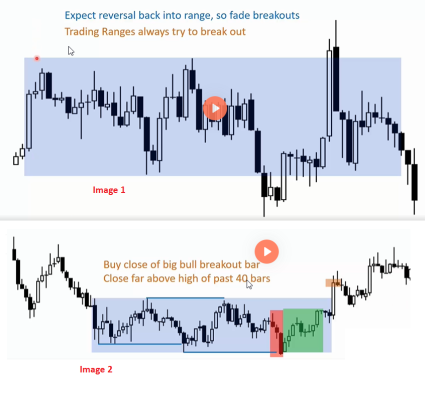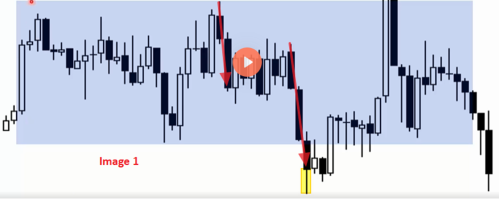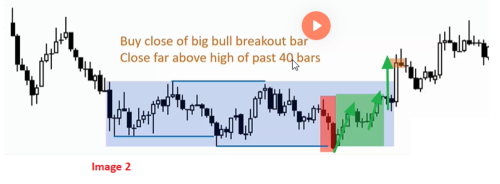The support forum is built with (1) General and FAQ forums for common trading queries received from aspiring and experienced traders, and (2) forums for course video topics. How to Trade Price Action and How to Trade Forex Price Action videos are consolidated into common forums.
Brooks Trading Course social media communities
In Image 1, AL discusses the concept of the second leg trap, highlighting features such as a trading range with weak follow-through bars, a failed breakout attempt, and traders engaging in buying low and selling high. This often results in a vacuum effect on either side.
Comparing Image 2 to Image 1, both depict a bull breakout bar closing significantly above the high of the past 40 bars. The query arises: why might traders choose to buy the bull close in Image 2 without waiting for additional information?
While Image 1 has fewer bull bars, they are substantial, being drawn into the upper part of the trading range. In contrast, Image 2 displays more consistent price action with multiple bull bars. Despite this, both scenarios remain within a trading range.
One difference I notice is where the legs started. From my understanding a 2nd Leg Trap is a strong move (or 2nd leg) INTO the top or bottom 3rd of a TR.
The bearish leg in Image 1 started in the middle 3rd and pushed into (and past) the bottom 3rd. It also closed with a prominent bottom wick. This is the area where one might expect to find buyers, and after two inside bars they did come in and produce 2 legs up to the top 3rd.
In contrast the bull BO bar in Image 2 actually followed two smaller BL legs and originated in the top 3rd of the TR, a place where we would expect sellers, but instead got a BL BO that stayed near it's close for another 2 bars before pulling back.



